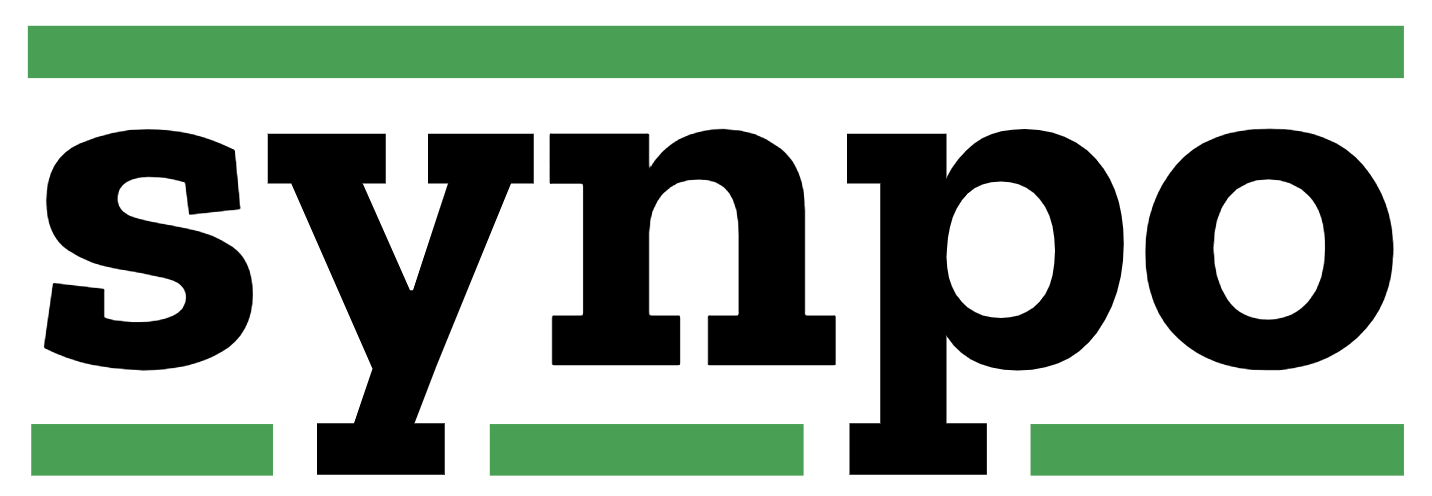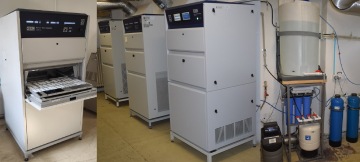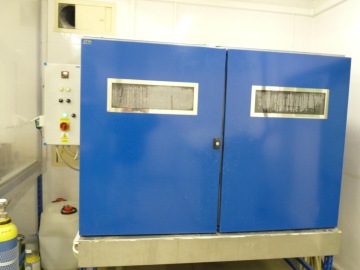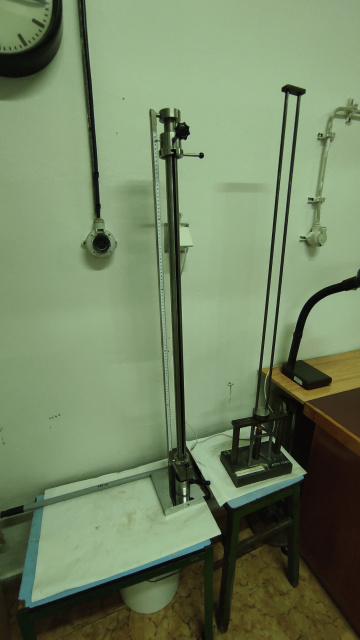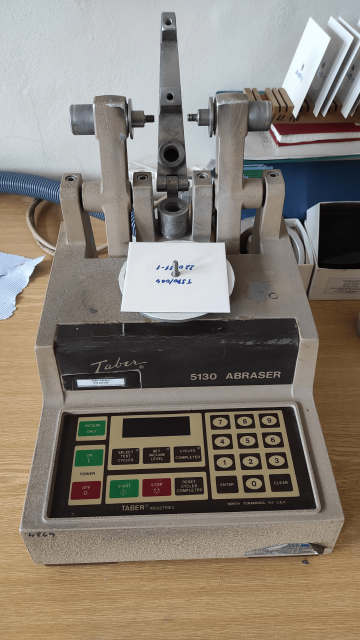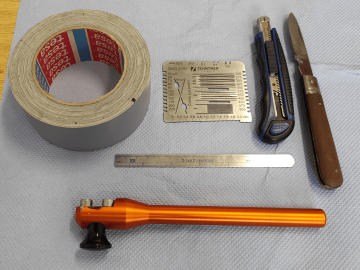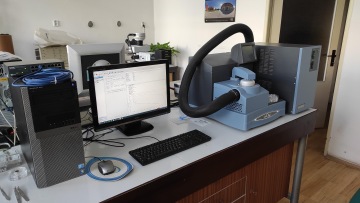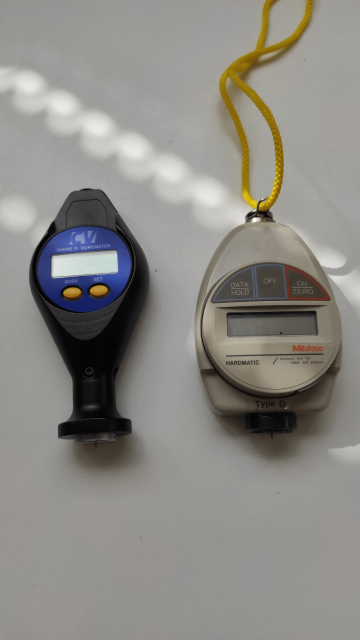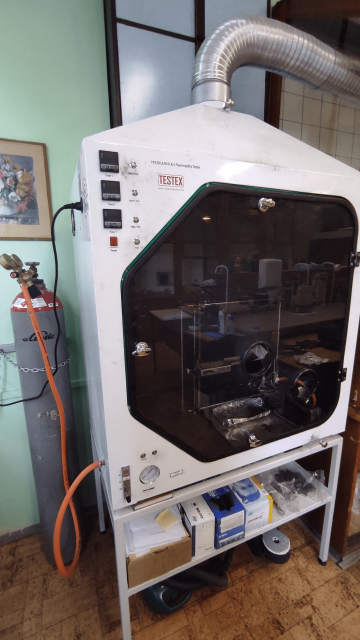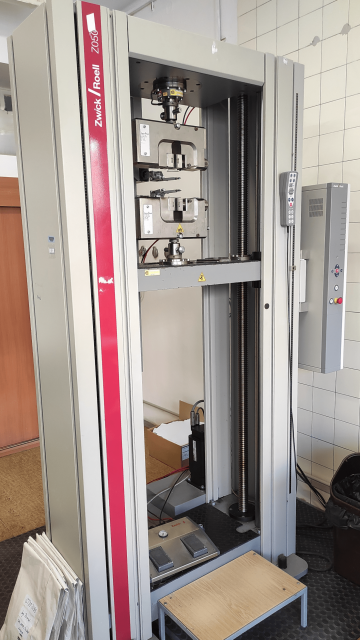SERVICES AND PRODUCTS > RESEARCH AND DEVELOPMENT > TESTING AND EVALUATION
Testing and Evaluation
Accredited laboratories for analysis and mechanical testing of polymeric materials (plastics and composites, adhesives, sealants and other materials, especially for engineering, automotive and construction) are an integral part of Synpo, akciová společnost. Testing laboratory No. 1105.2 is a workplace accredited by ČIA (Czech Accreditation Institute) according to the standard ČSN EN ISO/IEC 17025:2018. The laboratory performs mechanical, thermomechanical and thermal testing of materials, including evaluation of paints and protective coatings. Tests above are an essential part of the development of polymeric materials and paints, and subsequently also for the certification of final products.
This testing laboratory serves as an independent third party in choosing of construction material or surface treatment with properties and durability according to your needs. The results of our tests can confirm if tested material meet/does not meet requirements of a harmonized standard, company standard or Purchase Contract. The laboratory is a member of the Association of Czech Testing Laboratories (CTLA) (No. 034) and competent to perform and evaluate a number of tests even outside the ČIA accreditation certificate. All tests are performed according to ČSN, ISO or ASTM and DIN, or as agreed with the customer.
We are able to perform the tests required for the granting of a certificate for most products in the field of construction chemistry, according to NV 81/99 Coll. and ensure that the certificate is granted.
Laboratory Equipment
- DSC, MDSC,
- TMA, DMA,
- Universal blasting machines with a temperature chamber from -70 °C to +250 °C,
- Climatic chambers - Temperature/Humidity/Corrosion contaminant,
- Equipment for accelerated weather tests (Q-UV, Q-Sun),
- Corrosion chambers (NSS, CASS, AASS, SO2).
Our Equipment
Climate chamber Discovery (up to -40/-60 °C, 360 liters)
Climate chamber CTS (up to -70 °C, 360 liters)
Climate chamber CSC (up to -70 °C, 600 liters)
ASCOTT chambers for the most demanding CCT cyclic corrosion tests, e.g. VDA 233-102, SAE J2334, VCS 1027, CETP and many others (up to -20 °C, 1300 liters)
What Can We Do?
- General evaluation of the surface treatment before, but especially after simulations of corrosion, exposure, adhesion or other tests. European standards ČSN EN ISO 4628-1, 2, 3, 4, 5, 6, 8, 10, or for example ČSN EN ISO 10289 – Describing the damage assessment score: Surface protection, American standards such as ASTM D660, 714 and 1654 (equivalents of the mentioned ISO standards).
- Basic measurement test called DFT (Dry film thickness) which is a layer of surface treatment above the substrate. Measurements are performed on ferromagnetic materials using the method of magnetic induction according to ČSN EN ISO 2178, or on non-ferromagnetic materials using eddy currents. The comprehensive standard, which includes more than 6 different measurement methods, is ČSN EN ISO 2808.
- Appearance evaluation methodology according to Lab colorimetric parameters (L – brightness, a/b – chromaticity), saturation according to ASTM E1347 standard - Comparison of individual colors and their deviations using the ΔE parameter. Measurement of mirror gloss at different angles, 20° – for glossy paints, 60° – for semi-matt/semi-gloss and 85° – for matt paints according to ČSN EN ISO 2813. Indispensable set of measurements evaluating color degradation and PU during and after UV exposure simulation tests/Xenon or moisture,
- Evaluation of the chalking parameter is widely used method of evaluation according to ČSN EN ISO 4628-5 which is hand in hand with the deviation ΔE and loss of gloss. Visual evaluation is also performed according to ČSN EN ISO 3668 in the exposure box.
- ČSN EN ISO 4892-3 and ČSN EN ISO 16474-3 – Accelerated laboratory weather tests under UV lamps (UVA-340, UVB-313 and UVA 351),
- ČSN EN ISO 4892-2 and ČSN EN ISO 16474-2 – Accelerated laboratory weather tests under a xenon lamp,
- Accelerated tests known as Florida test (PV 3930) – Xenon test in warm and humid environments. Kalahari/Arizona test (PV 3929) – Xeno test in hot and dry desert environments,
- These tests are predominantly used to determine the color fastness of coatings and plastic/composite materials, where the change in surface appearance is visually evaluated and a change in color shade (ASTM E1347) and a decrease in gloss number (ČSN EN ISO 2813) are subsequently measured by objective measurement,
- Both tests are also very suitable for simulating the accelerated aging of materials in order to assess their mechanical properties as a function of exposure time. The control of mechanical properties is performed mainly by the tensile test (ČSN EN ISO 527-2) and the impact toughness test (ČSN EN ISO 179-1). The material and the surface treatment are stressed not only by the radiation itself but also by condensed moisture which is manifested by corrosion and adhesion stress of the material and the surface treatment but also by cold water spraying (xenon test + UV spraying) which simulates thermal surface shock and mechanical erosion.
- ČSN EN ISO 9227, ČSN EN ISO 12944-6,9 – Accelerated laboratory corrosion tests in salt fog. They also contain sophisticated cyclic corrosion testing including many stressors (salt fog, salt spray, heat, frost, condensation of water, drying, UV radiation, etc.) – it is a part of proof tests for ŘSD according to TKP 19.B,
- ČSN EN ISO 6270-1, 2 – Accelerated laboratory corrosion testing with condensation of water (ČSN EN ISO 13523-27 – Sandwich test)
- ČSN EN ISO 3231, ČSN EN ISO 6988, DIN 50018 – Accelerated laboratory corrosion tests with water condensation in the presence of sulfur dioxide (the most suitable test for quickly determining of suitability and quality of the plating of the material - often part of the DBL (Mercedes-Benz) automotive standards,
PV 1210/1209 – Cyclic corrosion climatic rapid laboratory corrosion tests in salt fog with subsequent climatic test -20/+80 °C, - ČSN EN ISO 12944-6, 9 – Sophisticated cyclic corrosion tests involving the action of many stressors (salt fog, salt spray, heat, frost, water condensation, drying, UV radiation, etc.).
- ČSN EN ISO 1519, 6860 – Bending test (on cylindrical mandrel), conical bending,
- ČSN EN ISO 1520 – Dredging test (Adhesion test of paint elasticity, not performed on plating),
- ČSN EN ISO 6272-1, 2 – Impact test of impact paint,
- ČSN EN ISO 1522 – Determination of hardness using a pendulum (Persoz, König),
- ČSN EN ISO 15184 – Determination of material hardness using pencils,
- ČSN EN ISO 1518-1 – Determination of scratch resistance,
- ČSN EN ISO 5470-1, 7784-1, 2 – Abrasion resistance (Taber's instrument),
- Test based on abrasion by abrasive wheels under weight. The loss of PU material (Δm) thus reveals possible limits in the adhesive and cohesive forces, cracking, cohesion of the material - which is, for example, related to the amount of fillers in the PU formulation.
- Weather xenon radiation simulation tests. These are mainly tests simulating temperature and humidity conditions – constantly, stepwise or using ramps. These tests reveal technological problems of painting or plating which are prone to e.g. embrittlement, cracking, delamination (adhesion problems), instability of the color shade or construction problems – stress in the material, etc.,
- The best known standards include ČSN EN 60068-2, PV 1210, 2005 and many others. In real, every carmaker has its own climatic or specific contaminant/climate tests,
- Recently, a number of industries such as the automotive, engineering, aerospace and military industries have focused on climate testing with the presence of corrosive contaminants/stressors. These are the most demanding tests, which only the most complex and therefore the most expensive corrosion equipment can do. The testing laboratory has such equipment from the ASCOTT model AT1300 / P / 1 + ACC29 with a capacity of 2700 liters with its own air conditioning unit. This device can even salt sprays, sprinkling at sub-zero temperatures. It can wash walls, dry with hot air, etc. It can implement hundreds of standards such as CCT, CETP 00.00-L-467 (for Ford, Volvo, Scania), GM 9540P / GMW 14872 – for GM motors. D17 (ECC) tests for Renault. TPJLR for January and Land-Rover, TSH 1555G for Toyota, SAE J2334 and many more.
- Surface structure parameters are measured according to ČSN EN ISO 4287 – Geometric requirements for products (GPS). Surface roughness test equipment, SURFTEST SJ-201 Mitutoyo. A tactile measuring device that examines the given surfaces with a scanning diamond tip. The resulting values are then in the form of parameters RY, RZ, Ra, RMAX – such as arithmetic mean, deviation from the profile or maximum roughness profile in micrometers (µm).
- The test is often included just after exposure simulations of softened plastics or rubbers due to matrix degradation due to the synergistic effect of UV/sun and humidity.
- Tests based mainly on the principle of resistance of surface treatment or material to chemicals. These are mostly industrial and fuel fluids of cars such as gasoline, diesel, petroleum fractions, solvents, cleaners, greases and oils, lubricants, separators, acids (e.g. sulphuric acid from car batteries), brake fluids, bird droppings, resins, etc. When these substances penetrate, materials can soften, form osmotic blisters, fade with loss of gloss, dissolve, corrode. The most commonly used standard ČSN EN ISO 2812-1, 2, 3, 4 – has various design options – immersion in liquids, immersion in water and then the tampon or drip method. The so-called Double Rubs Test using acetone is also popular, as the surface treatment is also mechanically stressed in the chemical. The basic test for color resistance and the degree of curing of the binder is the MEK test which breaks the crosslinked bonds, softens the whole system, which is then tested with a special pencil hardness 3B.
- Tests to assess the resistance of materials such as plaster, wood, concrete,
- ČSN EN ISO 11998 – the material withstands wet abrasion cycles with a certain decrease in dry film thickness,
- ČSN EN ISO 927-5 / 1062-3 – Test in which the change in the weight of painted wood material due to water absorption through the surface treatment is calculated,
- ČSN EN ISO 7783 – Test of resistance of material to water vapor permeation,
- ČSN EN 1062-6 – Permeability test for carbon dioxide (intended for plasters and masonry).
Are you interested? Send a non-binding inquiry using the form or directly.
By submitting the form, you agree to the processing of personal data.
Department of Laboratory of Assessment and Testing
Edita Matysová, Ph.D.
Phone: +420 777 598 938
Email: edita.matysova@synpo.cz
